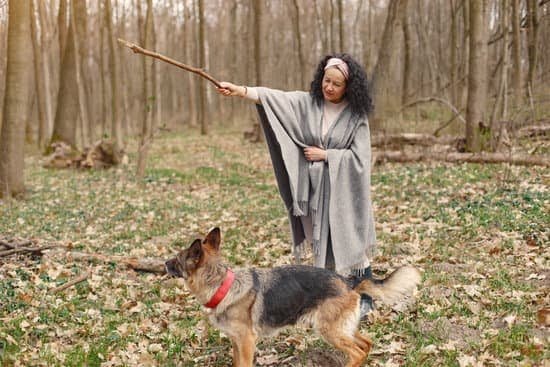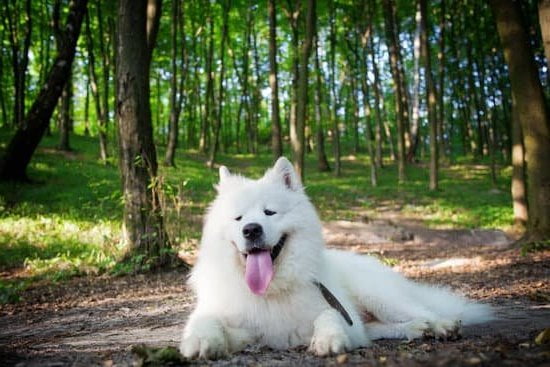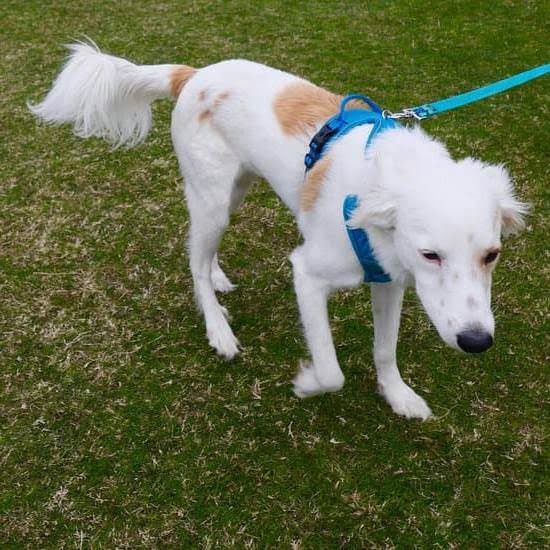Introduction
Dog Separation Anxiety (DSA) is a condition where dogs become fearful and agitated when separated from their owner, other humans, and/or other animals. It is one of the most common anxiety disorders among dogs. Symptoms of DSA in dogs can include barking or howling, destructive behaviors such as chewing, scratching or digging, elimination indoors, pacing and excessive salivation. Dogs may also engage in behaviors such as attempts to escape from wherever they are being contained and running away when left alone.
The exact cause of DSA is unknown but it can be linked to a variety of factors including changes in the dog’s routine and environment due to a major event or life change such as moving houses or the death of an owner; genetics; lack of attachments with humans; lack of socialization; and health conditions that generate chronic pain or discomfort. Training dogs with separation anxiety therefore requires a multi-pronged approach that combines behavior modification strategies combined with conditioning exercises designed to desensitize the dog to being alone as well as providing it with replacement activities that make it feel comfortable when alone. Other treatments such as medication prescribed by vets can also be used to alleviate symptoms in extreme cases.
Signs Your Dog Might Be Experiencing Separation Anxiety
Separation anxiety in dogs is a common problem that can manifest itself through destructive behavior, excessive barking or vocalizations, and/or urinating or defecating in the house when the owner is away. If your dog exhibits any of these behaviors when left alone — frequently or intensely — he or she may be suffering from separation anxiety. Other signs of possible separation anxiety include: pacing and restlessness, chewing excessively on furniture and objects, following the owner closely even when it’s inconvenient to do so, displaying anxious behavior whenever time alone approaches (such as jumping on guests), withdrawal and depression with extended periods of aloneness, salivation, and trembling. If you notice any of these signs in your pet’s behavior it could be an indication they are feeling anxious during times when they are separated from their owners.
Understanding the Underlying Causes behind Separation Anxiety
Separation anxiety in dogs arises when they are left alone or separated from their owners. It can result in significant distress and behavioral problems such as barking, whining, destructive behavior, or even attempts to escape. To effectively treat separation anxiety in dogs, it’s important to understand why the animal is displaying this type of extreme fear, anxiety and/or stress. Ultimately, all forms of behavior originate from learned experiences, genetics or instinct—or some combination of these three. In the case of separation anxiety specifically, dogs are thought to demonstrate fearful responses due to experiencing traumatic prior separations, limited socialization and reinforcement history with people other than their primary owner(s), being overly attached to one person or being treated harshly when separated from that person. The underlying cause(s) can also be due to inadequate training techniques for vacation/absences that inadvertently increase fear and stress instead of eliminating it; incorrect exposure protocols; poor inhibition techniques; clients who unintentionally reinforce and reward the anxious behaviors; or lack of positive conditioning with competing cues (e.g., usually food-based treat dispensing devices) that teach the dog how to cope with alone times during absences. Once the root cause has been established, then an effective training plan can be implemented designed around a particular strategy such as counterconditioning (CC) and desensitization (DS).
Establishing Positive Routines to Help Your Dog
When it comes to training a dog with separation anxiety, establishing positive routines is key. Taking the time to train your dog and get them used to you not being around can help them feel more secure. You can start by spending short periods of time away from your dog, as well as providing rewards for when they exhibit desired behaviors. Keep in mind that your pup needs short and frequent exposures in order to become accustomed to being alone. Another thing you can do is create “safe spots” where you leave treats or toys for them while you’re gone so that they have something to look forward to whenever you leave the house. Additionally, it’s important to exercise your pooch often during positive activities, such as going on walks or playing fetch–this will help tire him out while also giving him quality time with his favorite person: you! In addition, teaching simple commands like sit and stay can provide your pup with an outlet for pent-up energy and more interaction with you. Finally, make sure not to create any triggers at the start of each session by always ending on a positive note, otherwise they may associate the start of each episode of loneliness with negative things which could make their anxiety worse.
Using Positive Reinforcement Training Techniques
Separation anxiety in dogs can be debilitating, resulting in destructive behavior, incessant barking and whining, aggression, and house soiling. Fortunately, positive reinforcement techniques can be used to help dogs deal with their feelings of distress when separated from their owners.
First, it is important to understand that separation anxiety can occur both while the owner is gone and when they are present. In the former case, there are specific exercises to reduce a dog’s anxiety levels. These may include incorporating classical conditioning techniques to gradually desensitize a dog to different cues – such as picking up car keys or putting on a coat – that indicate upcoming departure. If a dog remains distressed during these exercises, it is important for owners not to prolong the episode but rather end it with a positive note after the exercise has finished.
In preparation for leaving the home, owners should teach their dog successful behaviors such as going into their crate or “place” cueing them prior to leaving, rewarding them with high-value treats and toys before they leave and providing an enticing activity such as interactive puzzle toys only upon leaving and returning from outings. Additionally training commands like sit or down using rewards like food or praise may also prove beneficial by helping occupying their minds instead of focusing on their owner’s absence.
In instances where a dog displays anxiousness even when its owner remains in sight (but out of reach) people often find themselves unable to remain at home for extended periods due extensive barking and jumping etc., during these times owners should restrict physical contact until good behavior has been displayed or alternatively redirect non-destructive behaviors into acceptable channels using objects such as rubber toys so that the pet’s focus shifts away from its emotional response onto something more constructive. Lastly reinforcing desired behavior by giving treats whenever your pet displays appropriate responses such as resting calmly while being away from you will build on this newly developed habit overtime making your absence much more bearable for both of you!
Exposing Your Dog to Triggers and Desensitizing Them
When it comes to training dogs with separation anxiety, it’s important to desensitize them to the things that trigger their behavior. Start by introducing your dog to triggers slowly at a low intensity level and build up gradually. For instance, if your dog gets anxious when you leave the house, start leaving for shorter periods of time and slowly increase the amount of time you are gone each day. This process will help them become more accustomed to being alone and helps them understand that when you leave nothing bad happens. Additionally, establish a set routine so that your pup knows what will happen during certain activities like eating or walking as this provides comfort and balance for them. Provide positive reinforcement every time your pup is successful in overcoming an obstacle or completing a task. Finally, make sure that when you step away from home you don’t give off any stress signals as this can cause your dog’s anxiety levels to skyrocket. Instead, show calmness and use words like “goodbye” in a cheerful tone.
Relieving Symptoms with Natural and Holistic Remedies
Natural and holistic remedies can be an effective tool for treating dogs that suffer from separation anxiety. Dog owners can start by recognizing the signs of separation anxiety in their pet, such as excessive barking or digging when left alone, inappropriate elimination when not at home, pacing and restlessness when being left alone, and destructive behaviors such as chewing up furniture.
The next step is to create a positive environment with plenty of exercise and mental stimulation. It is important that the owner shows patience, praise, consistency and displays positive reinforcement during training. Taking the time to get to know your pet’s individual needs can also make a big difference in treating their anxiety. In addition, it’s important for dog owners to spend quality time with their pet each day; this will create a stronger bond of trust between the two of them.
One strategy used to reduce separation anxiety in dogs is desensitization training. During this type of training owners should gradually increase the amount of time they leave their pet alone until they have achieved full independence from their companion. This can help reduce fear and stress felt by the animal. Other natural remedies include herbs such as chamomile or lavender for calming nerves; pet-specific flower essences or Bach Rescue Remedy spray; music specifically designed for relaxation; calming scents like lavender oil or natural earthy smells (cedar chips); and light massage therapy which can often provide considerable relief to nervousness-induced symptoms like shaking or panting. These natural remedies are non-invasive treatments that may help calm a distressed pup while they learn how to cope with loneliness more effectively over time.
Long-Term Tips for Dealing with Separation Anxiety
The first step to dealing with dogs that have separation anxiety is to provide environmental enrichment. Environmental enrichment includes activities the dog can engage in while they’re home alone, such as puzzle toys or kibble balls. This will help alleviate some of the boredom and prevent destructive behaviors from occurring. Interacting with your dog for a few minutes before leaving for extended periods of time can also help curb their anxiety levels. Talk calmly and coo softly to reassure them that everything is okay.
Another long-term solution for dealing with dogs with separation anxiety is by scheduling regular training sessions with a qualified dog trainer who’s experienced in treating this kind of behavior. During the sessions, the trainer will work on teaching your dog self-control and proper pawing technique, which helps distract dogs when anxious triggers occur. Additionally, positive reinforcement techniques should be used to reward good behavior during these sessions in order to reinforce appropriate responses when they’re feeling anxious or stressed out. Finally, it’s important to take steps to desensitize your pup to being alone through gradual exposure therapy—this will allow them to adjust slowly and safely until they’ve become more comfortable in spending time apart from their owners.
Summary
Separation anxiety is a common behavior issue that many dog owners experience. The condition can cause dogs to become anxious or even destructive when left alone, which can have serious consequences. Fortunately, there are ways to help dogs with separation anxiety. This can involve making sure your pup has plenty of exercise and mental stimulation, setting up a safe space for them to stay in while you’re away, and using desensitization techniques like leaving periodically and increasing the time in small increments. Additionally, it’s important to practice good crate training by introducing your pup slowly to their crate and not connecting their crate with negative experiences like punishment. With dedication and consistency on the part of the owner, separation anxiety can be successfully managed in many dogs.

Welcome to the blog! I am a professional dog trainer and have been working with dogs for many years. In this blog, I will be discussing various topics related to dog training, including tips, tricks, and advice. I hope you find this information helpful and informative. Thanks for reading!





